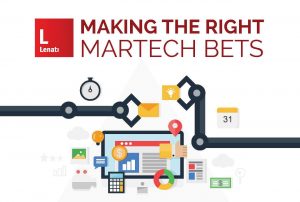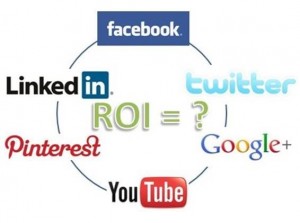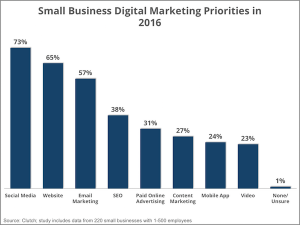Columnist Jim Yu shares insights on how brands can successfully integrate search, social and content into their digital campaigns.

An estimated 67 percent of the buyer’s journey now takes place online. And as a result, brands are developing digital marketing strategies at increasing rates.
As brands compete on the digital marketing battleground, a clear differentiation is appearing among organizations just starting out in search, those that are developing and scaling customer-centric content strategies and the innovators that stay ahead of their digital marketing competition.
In a content market where spend is forecast to grow to over $300 billion in the next four years, modern-day marketers are building holistic digital marketing strategies that span across search, social and content marketing disciplines. This convergence of paid, owned and earned media strategies means marketing teams must work cross-functionally to support company-wide growth.
With collaboration and growth come the challenges of scale, and as marketers look to integrate content into digital strategies, organizing for success becomes a top operational priority.
Last week, my colleague Brad Mattick, VP of Marketing and Products at BrightEdge (my employer), spoke at Search Engine Land’s SMX West about the power of using a maturity model across three main areas: processes, people and technology. Below is a summary of the presentation for those who weren’t able to make the show.
Structuring for digital marketing success

The most competitive businesses around the world are focusing on their search, content and digital marketing processes for quality improvement, cost reduction and delivery time reduction. Successful organizations are building content that provides a seamless customer experience across all their digital channels to attract, engage and convert customers.
In order to gain a successful competitive advantage and measurable business results, it’s important that organizations create a framework that focuses on:
- Search success – As the key driver.
- Content – As the catalyst.
- Digital transformation – As the key outcome.

Emerging and foundational
The first two stages on the curve are the emerging and foundational stages. Brands at these stages are really just starting to understand search and develop their content marketing efforts.
Optimization of content and assets can be random, search is primarily paid and organic search is algorithmic responsive. Social efforts are limited to individual/personal accounts, with business accounts being set by the foundational stage.
Content moves from a traditional offline focus toward online material, but it’s still largely written by one person.
From a personal and technological perspective, these stages are still very rudimentary. With only one or a few people producing content, integration is still a largely foreign concept, and departments and roles are likely still highly siloed. There’s limited technology use and adoption at these stages.
Scaling
At the scaling stage, brands will start to develop organic and paid search strategies in synergy. Many brands at this stage test and realign their methods to account for changes in marketing demand.
Brands at this level are also using social to amplify search and content. They listen to what their customers are saying and act on it.
Content is typically optimized during the creation process. By beginning to measure search and content performance, these companies are able to better understand how customers respond to their content and modify their processes in response.

At this stage, departments and employees are starting to work together. The importance of the holistic outlook on a successful digital strategy is starting to be understood at a business and executive level.
You also will see the construction of critical technology stacks at the scaling stage. This is the combination of complementary technology platforms that you and your company will be using to run your search, social and content marketing campaigns.
These technology platforms (as opposed to tools at the emerging and foundational level) empower brands to uncover critical information — such as the ability to monitor the competitive landscape and gauge content optimization strengths and weaknesses — and begin to automate certain processes.
The high-performing stage
When brands reach the high-performing stage, they are really starting to evangelize search and content marketing success across their organization. Executive sponsors help transform digital marketing success.
For example, organic search (as the largest driver of web traffic) is placed at the center of all online marketing efforts, with advanced marketers utilizing data to target demand, optimize content and measure the results.
Social is interwoven across search and content strategies, and it’s utilized cross-functionally with PR and customer service efforts. Content produced is optimized and mapped to the customer journey. It is distributed effectively and appropriately measured and attributed.
Enterprise technology helps the organization measure the success of its efforts and understand where to make adjustments. At this level, you will also see far less siloed activity. People from different departments understand the importance of working together, and they actually grasp each other’s objectives and how they can amplify each other’s efforts.
Innovative
This describes the brands who are at the forefront of digital strategy. These organizations are using integrated digital marketing strategies to drive their PR, customer service and sales and strategies.

Brands at this level understand how to use their web properties and channels to interact with their customers in a meaningful way, building relationships with prospects and influencers alike.
Silos at this stage are also virtually nonexistent. Innovative marketers at this stage combine creativity and innovation with concrete measurements to gauge success. The organization and employees are proactive, and they understand the value of their roles and continually look for ways to get and stay ahead of the competition.
Below are five steps to help you stay ahead of the curve:
- Determine where you are currently on the maturity model.
- Identify the technology that will be needed to bring your organization to your desired level and begin to form ideas for building your technology stack.
- Evangelize your highest-performing channels — build executive relationships and create opportunities for different departments to work together to begin breaking down silos.
- Develop concrete goals to reach successive levels, including when you would like to reach each level.
- Drive transformation of your digital organization.
Organizations are now utilizing maturity models to transform how they operate. Every discipline, every organization and individual will have a different curve to follow. You can view more case studies on how brands are transforming the way they approach digital marketing in the full SMX presentation below.
Some opinions expressed in this article may be those of a guest author and not necessarily Marketing Land. Staff authors are listed here.








